The Most Hellish Place on Earth: Finale
Contender #1, Contender #2, Contender #3, Contender #4
I've been lying to you all. The Most Hellish Place on Earth has never, in fact, been about what the actual most hellish place on Earth is. If it had been, I'd have included a lot more places like the Danakil Depression, a scorching hot basin filled with volcanic activity. There are plenty of toxic swamps, everburning mines, and more hellscapes on Earth that I also could have included.
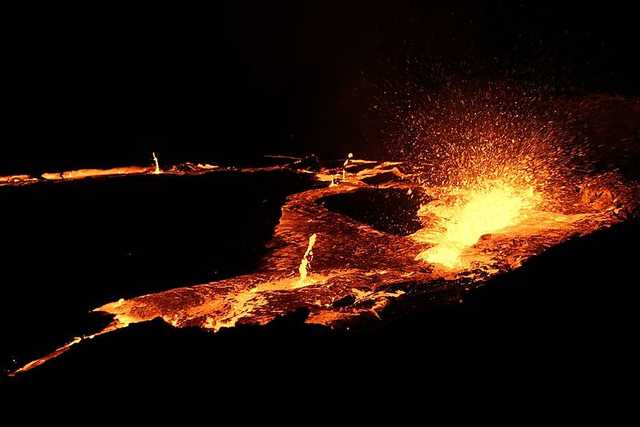
A volcanic eruption in the Danakil Depression in Africa. [Image source]
So what is the actual topic of this series? The Salar de Uyuni, Contender #3, should give you a clue. While the other three are unquestionably hellish, the Salar de Uyuni is one of the biggest tourist attractions in South America. People visit it constantly. Here's what they all have in common, though: They're lifeless or nearly so.
So what have I been talking about? Abiotic environments- places that fail to sustain life.
While life is incredibly adaptable, there are fundamental limitations to where it can be found. First, and most importantly, life requires water. The East Antarctic Ice Sheet (Contender #2) and the Atacama Desert (Contender #1) rank among the driest places on earth. They simply cannot support life. While the Salar de Uyuni and Dasht-e Lut do have more water than the other two, most of that water is in the form of hypersalinated water, which actually prevents many of the essential chemical reactions of life from even happening.
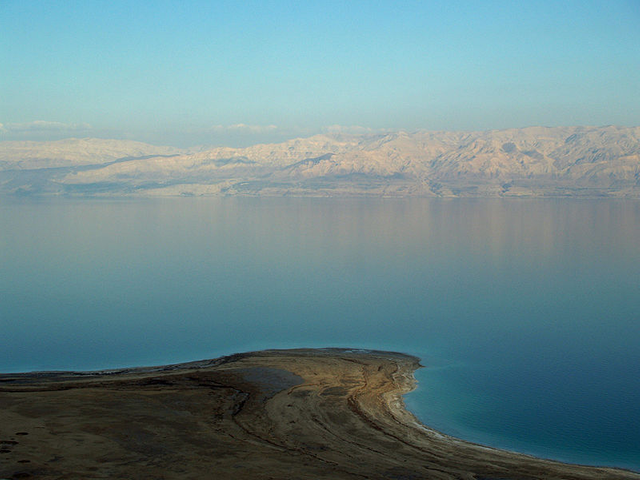
The Dead Sea is so saline that nothing lives in it. [Image source]
Next, an ecosystem needs an energy source. The more abundant energy is, the richer the ecosystem can be. The inner Atacama and the Antarctic Ice Sheet lack ecosystems entirely. The ice sheet not only spends months at a time without sunlight. The Atacama has enough sunlight, but due to the complete lack of water, no plants can grow there. Dasht-e Lut has a bit more of an ecosystem than the other three, but it's based almost entirely in migratory birds that die crossing the desert.
Finally, the ecosystem needs protection from dangerous extraneous circumstances. The extreme heat of Dasht-e Lut, the salinity of Dasht-e Lut or Salar de Uyuni, the extreme colds and winds of the Arctic Ice Sheets- these all pose extreme dangers to living things. Individually, perhaps, none of the dangerous extraneous circumstances in the third category is lethal- but in combination with the first or second category, it quickly becomes so.
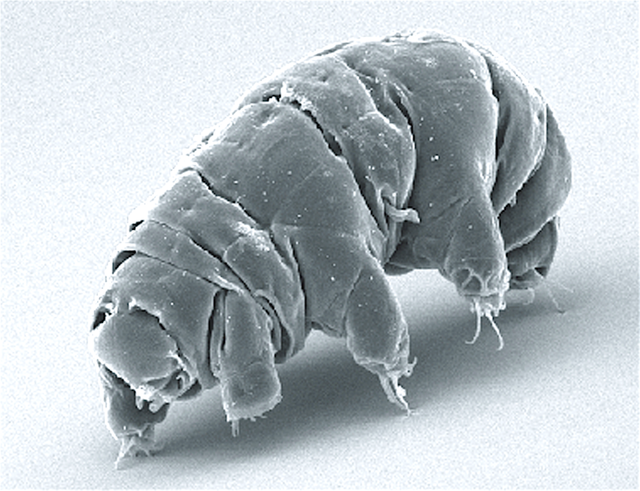
The microscopic tardigrade, champion of extreme survival in the animal kingdom. [Image source]
The tardigrade is celebrated for its ability to survive any sorts of conditions, but it's not being praised for its ability to thrive in any conditions. Like many other lifeforms, its adaptations to drought or nutrient deprivation tend to put it in a sort of stasis. In the case of drought, it dehydrates itself, a state in which it can remain for up to 30 years. In the case of permanent deserts like the Atacama or the Antarctic Ice Sheets, there are no tardigrade populations present.
Life is much better at surviving other sorts of extreme conditions- extreme heat, extreme acidity, extreme pressure. We can handle abundance better than deprivation. (Hypersalinity, despite the name, should be understood as deprivation rather than abundance- it's making a resource, water, unusuable.) We've even found life within the Earth's crust! The author of that piece, @mobbs, is doing a whole series on life surviving extreme conditions. You should check his writing out, he's excellent! (His post on Saharan ants actually inspired this whole series.)
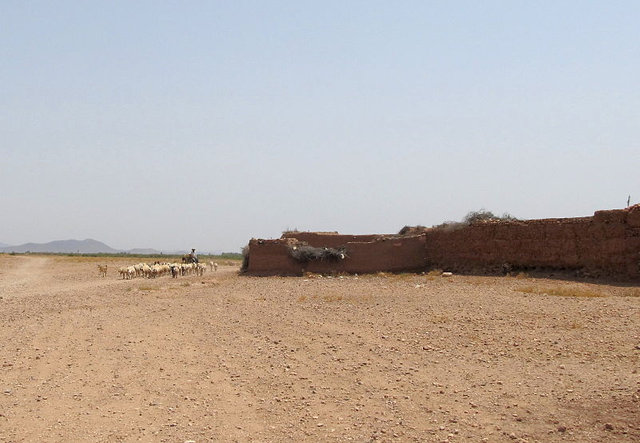
A Moroccan shepherd guiding his sheep through the growing Moroccan desert in search for fodder, and contributing to the desertification in the process. [Image source]
So why's this all so important? Well, mainly because the total percent of the Earth's surface that is desert is growing very, very quickly, and entirely due to human action. Deserts like the Sahara and Gobi are rapidly growing and swallowing up human settlements and non-desert habitats. There are a few major ways we're causing this.
First, of course, is climate change. Next is the way we hijack water for our own, usually agricultural, use, directing it away from already arid regions. Poor topsoil management- which I've blogged about multiple times before- can lead to topsoil blowing away, which leads to water just escaping a region entirely as runoff, which in turn increases erosion even more. Deforestation not only produces topsoil degradation like that of poor agricultural practices, but it also can actively change the way weather systems work in the region- forests often produce more rain above and around them. (The rain quite often follows the rainforest, rather than vice versa.) The biggest cause of desertification, however? Overgrazing. Sheep and goats have done more to contribute to the process than anything. It goes hand in hand with everything else, of course.
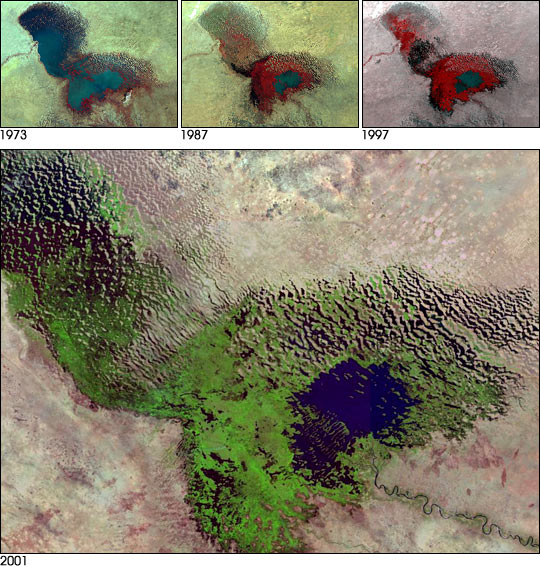
Lake Chad over a thirty year period. Actual water in blue. [Image source]
So the study of deserts- both their abiotic and their life supporting regions- is a pretty critical one in our near future. We need to understand how desert ecosystems work both for better surviving in arid conditions and for doing our best to prevent excessive desert growth. Deserts play an important role in our global ecosystem, but when allowed to grow unchecked they pose a serious threat to other ecosystems- including ours.
I'm still going to have you all decide which of the four contenders is the most hellish- I'll post the four in the comments, and whichever gets the most upvotes wins! (Not value of upvotes, just total upvotes. Go ahead and use 0% upvotes on them- not trying to milk extra votes, it's just the easiest way to run the poll.)
Bibliography:
https://en.wikipedia.org/wiki/Desertification
https://en.wikipedia.org/wiki/Tardigrade
https://en.wikipedia.org/wiki/Desert
Dirt: The Erosion of Civilization, by David R. Montgomery
The Song of the Dodo, by David Quammen
My geology classes, as well as my ongoing independent research into ecology.
All the sources for the previous four posts in the series.

This is may definition of hellish, TBH :p
Haha, hard to argue with that! Thankfully, due to its huge size and relative uniformity, it's easy enough to go somewhere with nobody else visible to the horizon.
Point nailed, thanks for this very nice series of posts.
Thanks for reading them!
Great read! I've been wanting to look deeper into the Red Sea region from a geological perspective lately. It's a bit disconcerting to hear that deserts in the world are growing exponentially, due to human interaction. Hopefully we can spread awareness about these issues around the world!
Hopefully so!
Oy....you left out Detroit! Ok sorry Detroit people just a joke...
See, I'd have gone with Pheonix.
Hah! Touche!
Very interesting read. I do not know which is the most hellish but i do know we need to learn to listen to what our planet is telling us and make some serious improvements to how we use our most precious resource water.
We most definitely do!
Great post! Very educational and very informative. Desertification is really a terrifying phenomenon, unfortunately we can only try to slow it down, but technology keeps improving so we might have a way in the future. Though weather we humans should even be messing with the planet's natural cycle is up for debate. Either way thanks for sharing this thought provoking post. Have a nice day.
We're already messing with our planet pretty heavily- but yeah, the question of whether we should engage in active modification is another one entirely. We should definitely partake in mitigation strategies, like emissions controls, nature preserve establishment, etc, at the very least.
Thanks for the repIy. I completely agree with you. At the very lease, we should try to mitigate the damage we've done to our planet. Though that would require a global effort. Something our world leaders, are not very keen on doing.
No they are not.
Contender #3, Salar de Uyuni.
@originalworks
The @OriginalWorks bot has determined this post by @mountainwashere to be original material and upvoted it!
To call @OriginalWorks, simply reply to any post with @originalworks or !originalworks in your message!
Contender #2, the East Antarctic Ice Sheet.
human greed is destroying everything but at least there are some initiatives like solar panels parks in the deserts